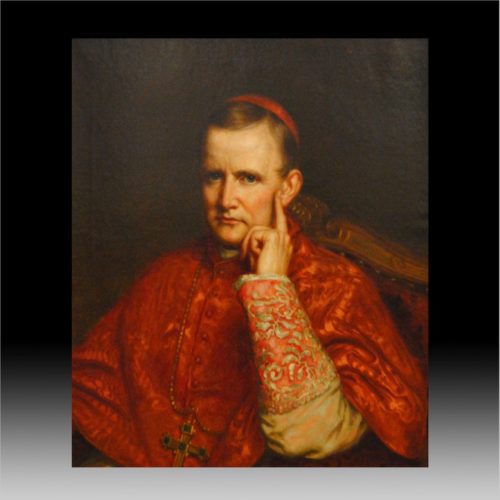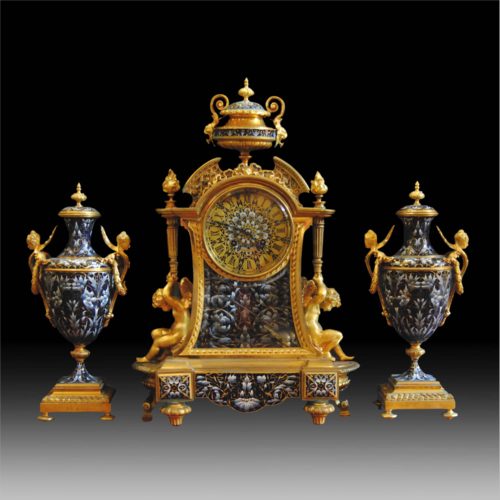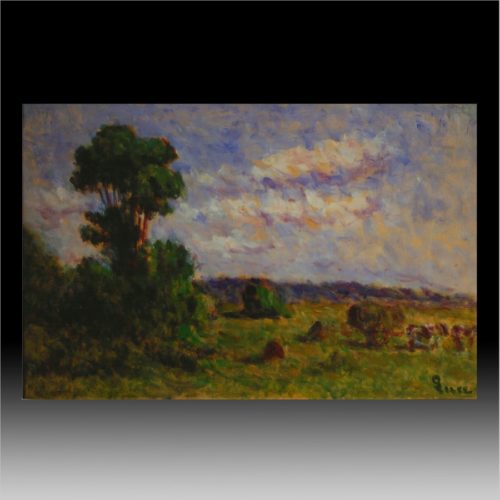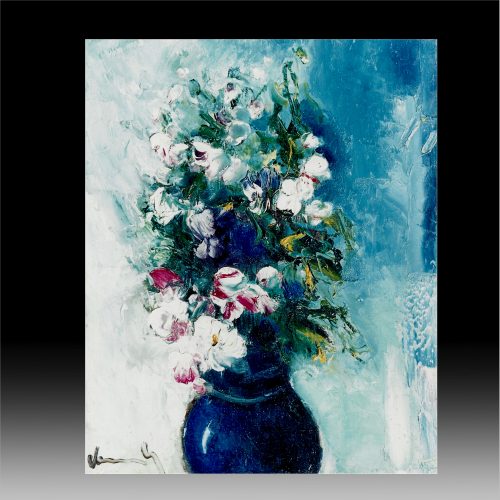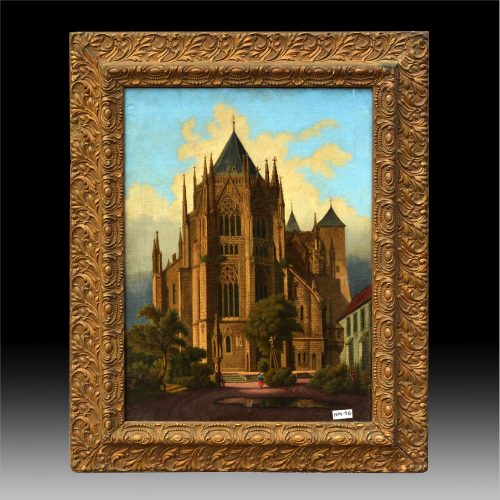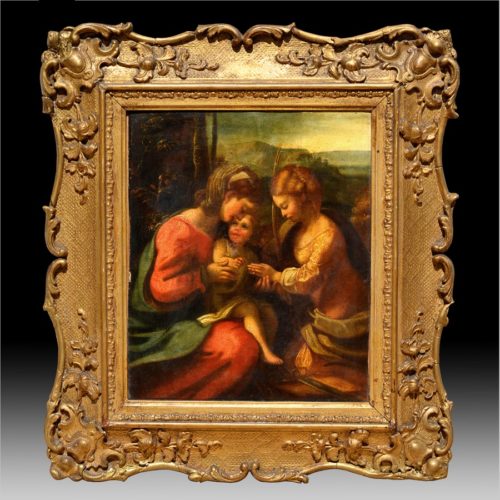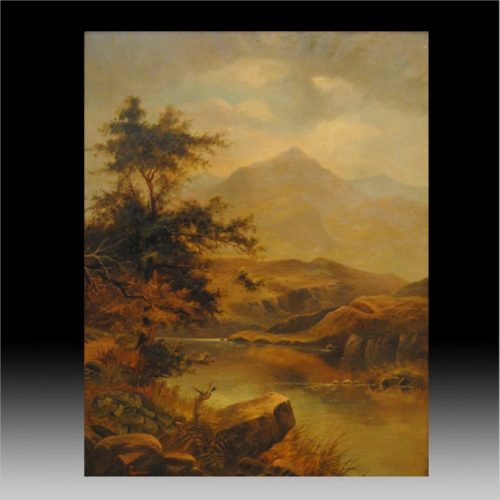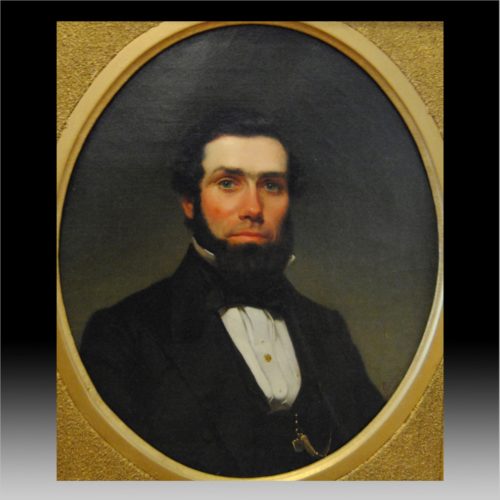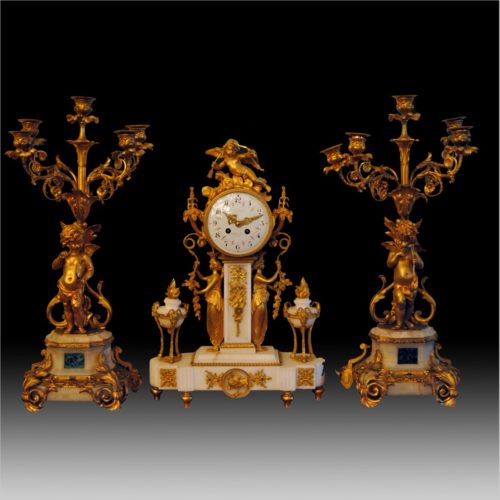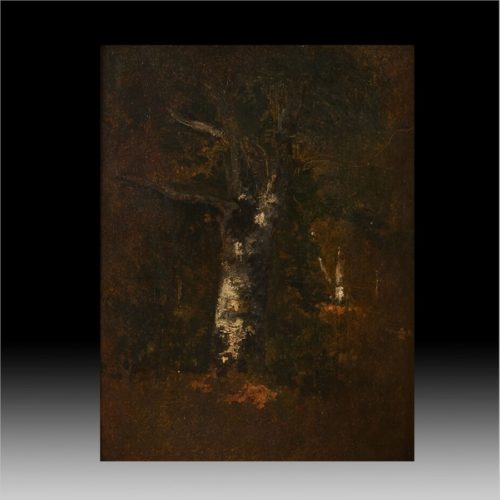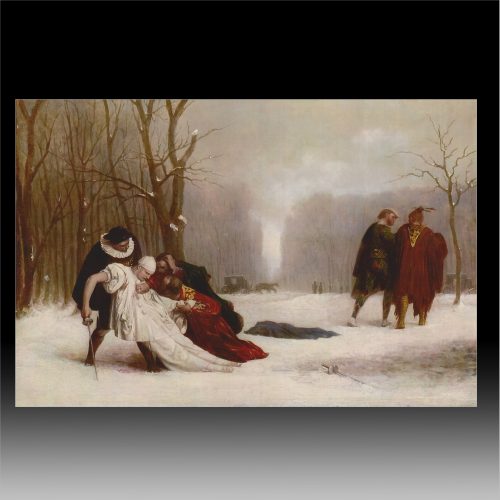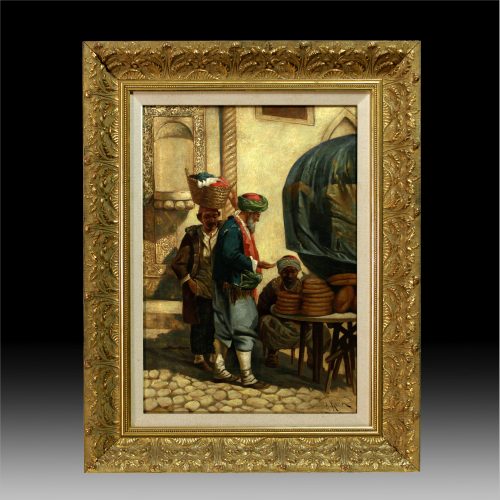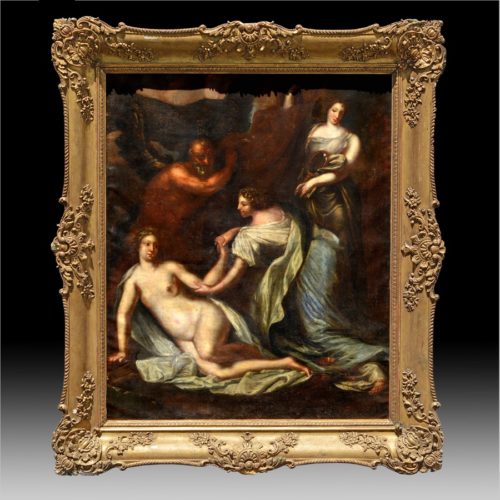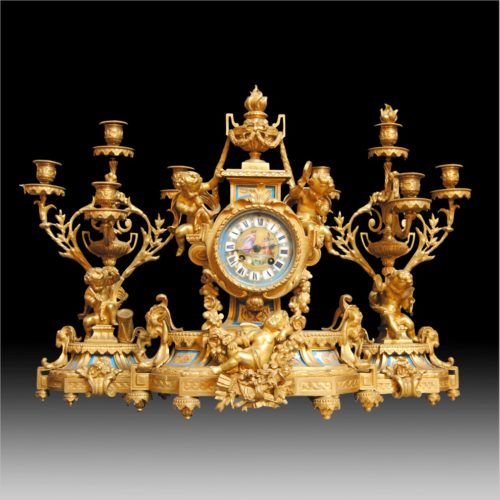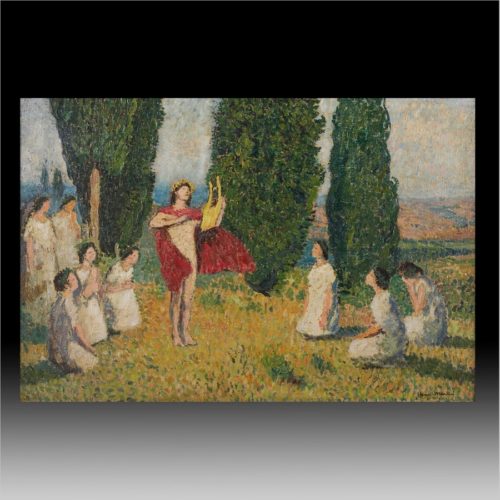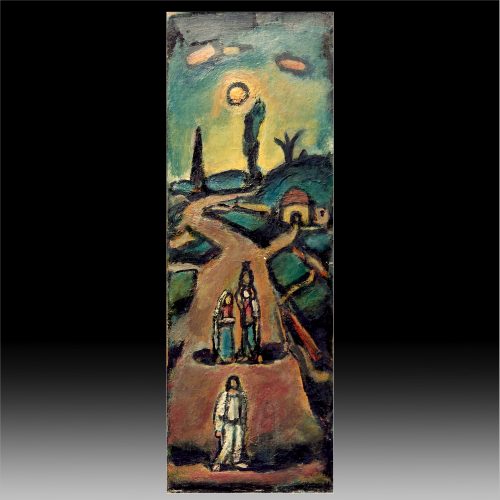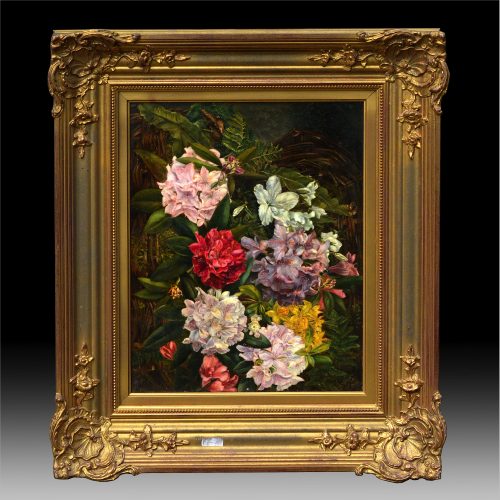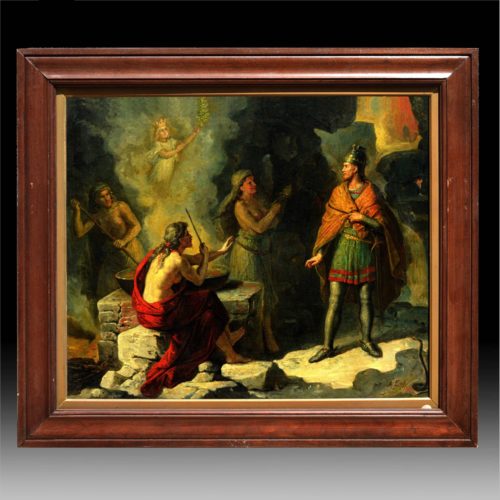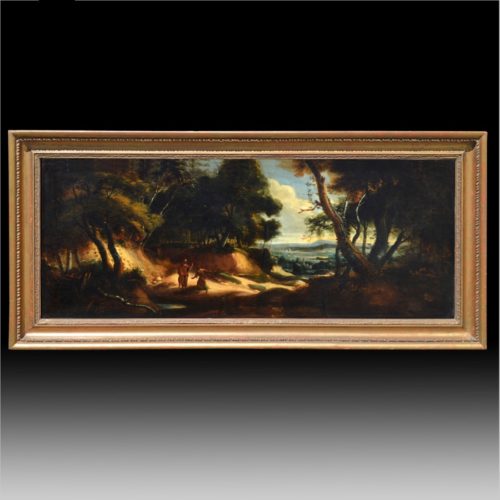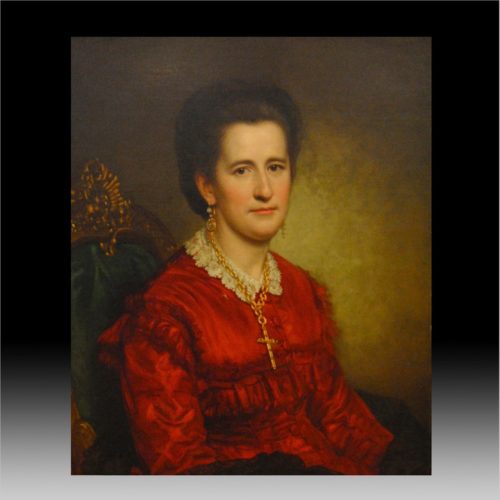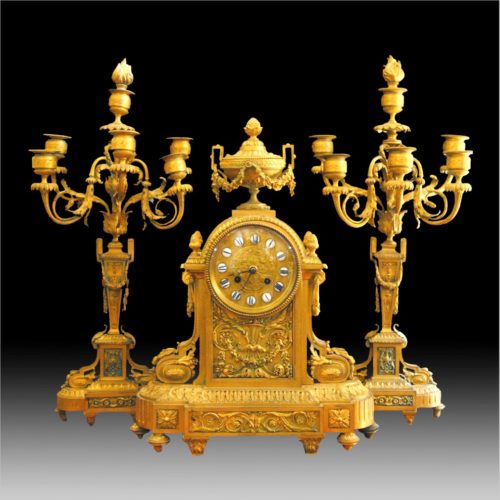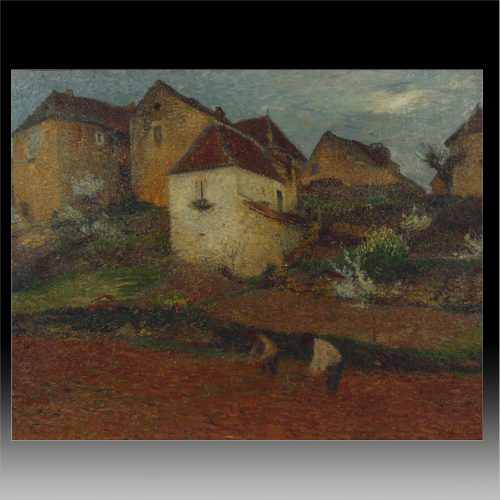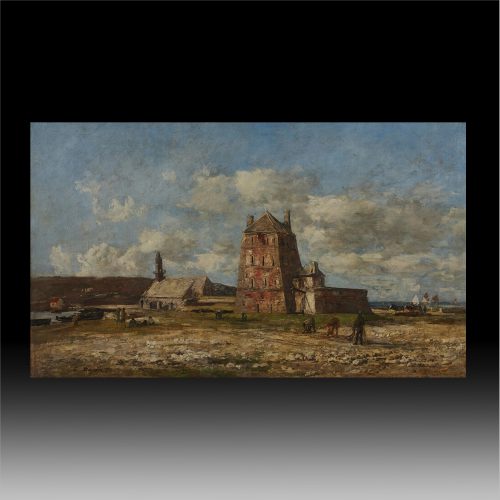-
George Peter Alexander Healy 1808-1894 Portrait of Cardinal John McCloskey Oil on Canvas 25” x 30” Signed top right and dated SLOCT2281-127 AC16000
-
A Champlevé & Gilt-Bronze Clock Garniture (Set of 3 Pieces). Paris, circa 1880. The clock with Roman numeral dial above a glazed panel enclosing a stylized dark and light blue and white enamel foliate design, surmounted by a covered urn and flanked by putti upholding torches, on a shaped rectangular base and toupee feet. The clock dial is signed, E. Henry Paris; flanked by a pair of covered urn of ovoid form with handles in the form of Elizabethan maiden’s heads, on square bases and disc feet, the movement stamped 24568, striking on a bell. Clock Height: 18 ½ inches Vase Height (2): 11 inches SSP2999-353 AC43989 F-376
-
Maximilien Luce (French, 1858–1941) “La fenaison a I’lli de France” Oil on paper laid down on canvas 11 ¼”x 17 ½” Stamped lower right COA by J. Bouin-Luce Maximilien Luce (13 March 1858 – 6 February 1941) was a prolific French Neo-impressionist artist, known for his paintings, illustrations, engravings, and graphic art, and also for his anarchist activism. Starting as an engraver, he then concentrated on painting, first as an Impressionist, then as a Pointillist, and finally returning to Impressionism. Born on 13 March 1858 in Paris. His parents, of modest means, were Charles-Désiré Luce (1823–1888), a railway clerk, and Louise-Joséphine Dunas (1822–1878). The family lived in the Montparnasse, a working-class district of Paris. Luce attended school at l'Ecole communale, beginning in 1864. In 1872, the fourteen-year-old Luce became an apprentice with wood-engraver Henri-Théophile Hildebrand (1824–1897). During his three-year xylography apprenticeship, he also took night classes in drawing from instructors Truffet and Jules-Ernest Paris (1827–1895). During this period, Luce started painting in oils. He moved with his family to the southern Paris suburb of Montrouge. His art education continued as he attended drawing classes taught by Diogène Maillard (1840–1926) at the Gobelins tapestry factory. Luce began working in the studio of Eugène Froment (1844–1900) in 1876, producing woodcut prints for various publications, including L'Illustration and London's The Graphic. He took additional art courses, at l'Académie Suisse, and also in the studio of portrait painter Carolus-Duran (1837–1917). Through Froment's studio, Luce became friends with Léo Gausson and Émile-Gustave Cavallo-Péduzzi. These three artists spent time around Lagny-sur-Marne creating Impressionist landscapes.
-
Maurice de Vlaminck (French, 1876-1958) “Fleurs dans un vase bleu” Oil on canvas 18”x 14” Signed lower left COA by Wildenstein Institute
-
D. Lawrence R.A. “Lake” Oil on canvas 35” x 28 ½” Signed @AC-NB
-
John George Brown 1831-1913 Portrait of a Man Oil on canvas 10 ½” x 12 ½” AC12000 AC28000 @AC-NB
-
CLOCK (F-785): A Louis XVI Style Ormolu-mounted Carrara Marble Mantel Clock, circa 1890. The circular enamel dial surmounted by a cloud borne Cupid, on rectangular pedestal flanked by classically-draped caryatids issuing scrolling and fruiting foliage, above a shaped rectangular plinth mounted with -urn en flambeau finials supported on triple ram’s head monopodiae and inset to the front with a cockerel, on toupie feet, the dial inscribed […]/240 RUE RIVOLI/A PARIS 21 ¼ inches Candelabra: A Pair of Gilt-Bronze and Onyx Candelabra. Each base has malachite square on the front and Putto holding a Five-Light branch stem. Height: 23 inches. (AC10000) CNYAPR2401-121 AC19740 F-785 / F-64
-
Narcisse Virgilio Díaz de la Peña (French, 1807-1876) “La foret” oil on canvas 18’’x 12’’
-
After Jean Leon Gerome (French, 1824-1904) Sortie du Bal Masque Oil on panel. 9 x 13 ¼ in. (23 x 32.5 cm)
-
Aleksei Mikhailovich Korin (Russian, 1865-1923 The bread seller oil on canvas
-
Carlo (Vavaliere) Maratta (Italian, 1625-1713) “Time Revealing Truth and Justice” Oil on canvas 53 x 43 ½ inches (134.6 x 110.5 cm) CL102794-128 3108801-2 NB-1040 #49
-
A French Ormolu and Gilt-Bronze Clock Garniture. Sevres-style painted dial with classic scene signed HUDESINE/ de Bronzes /RUE TURENNE 64 Paris Clock Dimensions: Height 17 ½ inches, Width 12 ¾ inches, and 6 ½ inches deep. Candelabra Dimensions: Height: 17 ½ inches, with 5 lights. F-147
-
Henri Martin (French, 1860-1943) “Orphee” Oil on canvas 21 ¼” x 32” Signed lower right COA by David Roy Henri-Jean Guillaume Martin (5 August 1860 – 12 November 1943) was a renowned French impressionist painter. Born in Toulouse to a French cabinet maker and a mother of Italian descent, Martin successfully persuaded his father to permit him to become an artist. He began his career in 1877 at the Toulouse School of the Fine Arts, where he was under the tutelage of Jules Garipuy (he was also a pupil of Henry-Eugéne Delacroix). In 1879, Martin relocated to Paris and with the help of a scholarship, was able to study in Jean-Paul Laurens' studio. Four years later, he received his first medal at the Paris Salon, where he would hold his first exhibition three years later in 1886. The year after he won his first medal, Martin was awarded a scholarship for a tour in Italy, where he studied the work of veterans such as Giotto and Masaccio. His 1889 canvas submission to the Salon earned him the gold medal for work that has been described as Pointillist. That same year he became a member of the Legion of Honour. At the 1900 World Fair, he was awarded the Grand Prize for his work. During this period, he became friends with Auguste Rodin. Although Martin's work as a neo-impressionist is not considered groundbreaking, his work was rather well-received, and has been associated with world-class symbolist painter, Puvis de Chavannes. Due to his introverted temperament, Martin decided to move away from Paris. After a decade of searching for an ideal home, Martin bought Marquayrol, a mansion overlooking La Bastide du Vert, near Cahors. He performed his best work in the new tranquil environment, and died there in 1943. Martin also taught; among his pupils was the American painter Nellie Ellen Shepherd.
-
George Rouault (French, 1871-1958) “La Route” Oil on cradled board 29 ½”x 10 ¼” Signed, also titled on the reverse Painted in 1947 COA by I. Rouault LITERATURE: P. Couthion, 1961, #439, illustrated p. 445 I. Rouault and B. Dorival, Vol. 2, 1988, #2369, p. 236
-
British School (19th Century) "Floral Still Life" Signed with initials and dated Feb. '67 Oil on canvas 14 x 18 inches (35.6 x 45.7 cm)
-
War Scene Oil on canvas 22 ½” x 27” Year of work: 1880
-
Lodewyck de Vadder ‘The Temptation in the Wilderness’ oil on canvas 17 ¾ x 44 in. (45 x 111.8 cm) CL102794-177 351003-2 @AC-NB
-
George Peter Alexander Healy 1808-1894 Portrait of a Woman Oil on canvas 24 ½” x 29 ½” Provenance: Richard Bourne 08/07/73 Signed top left and dated 1872 AC20000 @AC-NB
-
Louis XVI Style Ormolu Three-Piece Clock Garniture, 19th Century. The architectural clock case surmounted by a Grecian urn and set with a circular dial with enameled Roman chapters &twin-barrel movement, inscribed F16A/F.Gautier & J.Albinet/Rue D’Abo – NO. 3, flanked by volutes, on a breakfront base with toupee feet, the candelabra each with a tapering pedestal upright issuing the five scrolled candelabra arms& flambeau finial. Height of Clock: 16 ½ inches Height of Candelabra: 20 ½ inches CN101702-6 AC11950 F-1213
-
Henri Martin (French, 1860-1943) “Les Travaux des Champs” Oil on canvas 27.1”x 36.3 ” COA by K. Ryjik
-
Eugéne Boudin (French, 1824-1898) “Camaret, le môle” Oil on canvas 21 ½”x 35” Signed and dated lower left, inscribed lower right Painted in 1873

